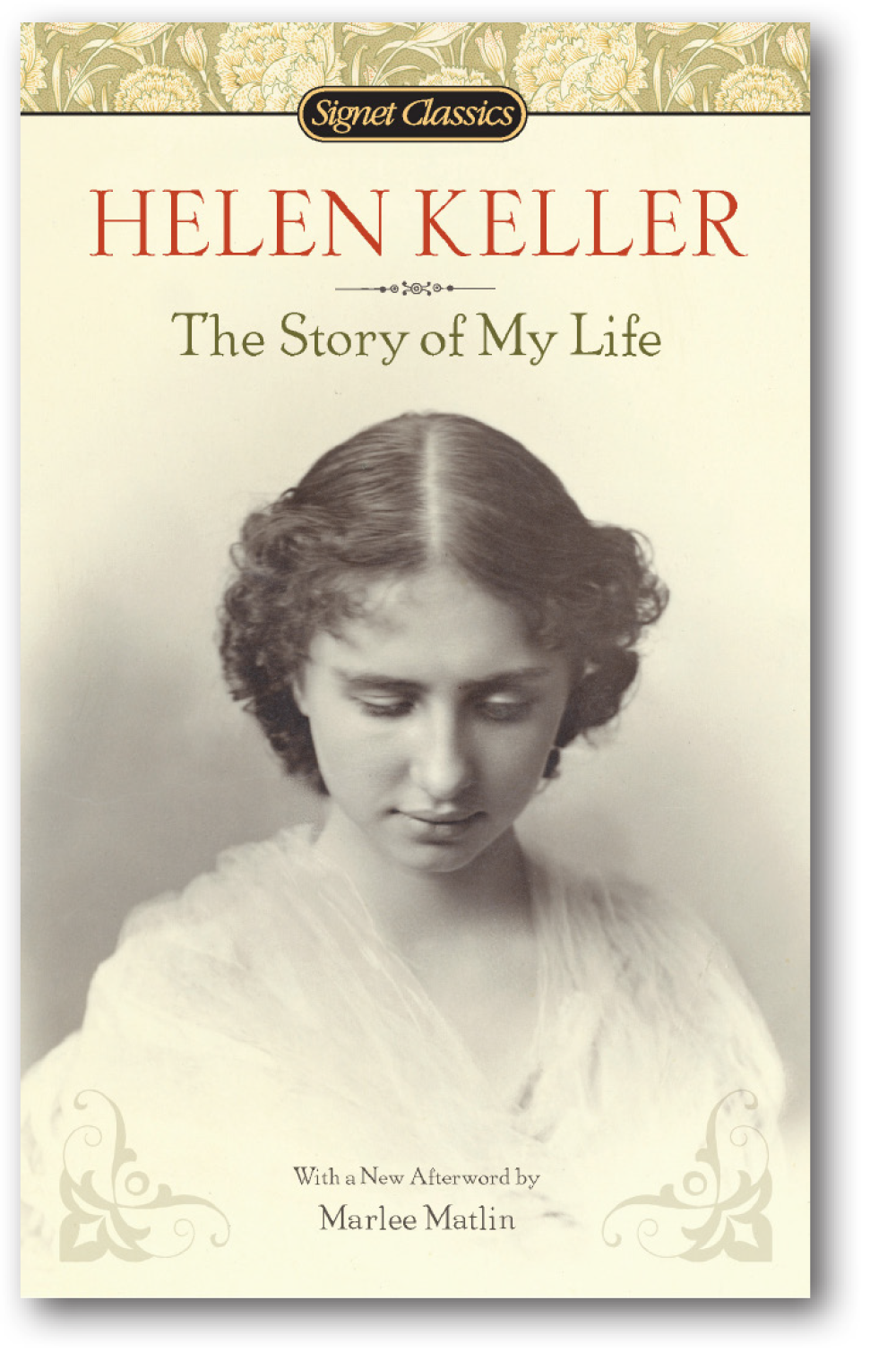
Helen’s parents decided to hire a teacher. Anne Sullivan was chosen and arrived at the Keller home. Helen later studied at Radcliffe College, a women’s school at Harvard, and graduated cum laude in 1904. She was the first deaf and blind person to earn a bachelor’s degree. Helen published articles in Ladies’ Home Journal and The Atlantic Monthly. She wanted to improve circumstances for people with handicaps by lecturing to audiences around the world. She authored twelve books and created an endowment for the American Foundation for the Blind. Helen received the Presidential Medal of Freedom.
Helen was ingenious and determined to communicate. She and her friend, Martha Washington, invented hand signs so they could talk with one another. Later, Anne Sullivan taught Helen Keller hundreds of signs and how to read Braille. Learn how to fingerspell in American Sign Language (ASL). Research Louis Braille and his invention of the Braille alphabet, which helped blind people read and write. Helen Keller and Louis Braille played important roles in history and worked diligently to help others overcome obstacles.
Helen Keller was awarded the Presidential Medal of Freedom. Research why and by whom this honor is given. Who, besides Helen, has received this award and for what reason?
Later in life, Helen became a social activist and was a member of the Socialist Party, which supported the presidential candidate, Eugene Debs. What is a social activist? What are the distinctive beliefs of the Socialist Party? How are this party’s beliefs different from what your family believes about government and government policy?
“Do not think of today’s failures, but of the success that may come tomorrow.”
“Great poetry, whether written in Greek or in English, needs no other interpreter than a responsive heart.”
“There is one universal religion, Helen—the religion of love. Love your Heavenly Father with your whole heart and soul, love every child of God as much as ever you can, and remember that the possibilities of good are greater than the possibilities of evil; and you have the key to Heaven.”
Helen faced challenges when she considered entering Radcliffe College at Harvard. How did Helen show courage and defeat the criticism? Was there another time in Helen’s life when she faced criticism?
Helen Keller was born in the late 1880s, a time known in American history as the Gilded Age, a term coined by Mark Twain in his novel The Gilded Age: A Tale of Today. Helen met Mark Twain at a luncheon. Why was this era called the Gilded Age?
During the late 1890s and into the turn of the century, the country entered the Progressive Era, a time of social activism and political reform. This was the time period in which Helen wrote her autobiography, and in fact, she became known for her activism in fighting for the issues faced by the deaf and blind. Who else was writing during this time and influential in social activism or political reform?
Helen lived a long and active life, despite her disabilities. She did not allow challenges to stand in the way of her aspirations. In the process, she inspired others to do the same and advocated for people with disabilities, people who could benefit from knowing how she overcame the obstacles in her life story.
The Story of My Life is a notable piece of American literature. Parents can decide to credit this read to American history, American literature, or another course with related content. If your learner desires to read more works by Helen Keller, several can be found for free on Gutenburg.
heryl Bastian has been married to Mike for twenty-eight years and began homeschooling in 1993. A mother of eight children—toddler through adult—Cheryl knows the trials and triumphs of embracing each season of life and is passionate about equipping and inspiring parents who want to nurture a desire for life-long learning in their children.

